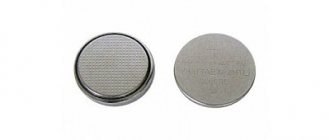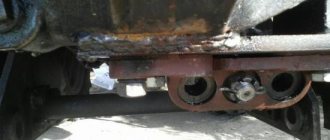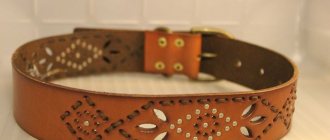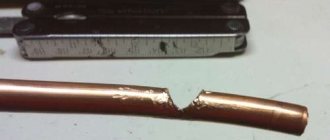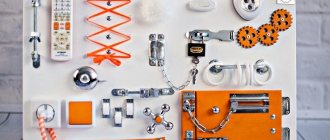- December 2, 2018
- Equipment
- Tamila Gresko
Judging by the reviews, crab fishing is one of the exciting activities. You can get them, like crayfish, with your bare hands. However, the crab can pinch painfully. In addition, when searching, the fisherman has to probe the bottom for a long time. According to experts, it is more expedient to use a special device for this purpose, which, accordingly, is also called a crab trap. It won’t be difficult to build it with your own hands.
Fishermen involved in this fishery professionally have invented several successful designs. Despite the fact that there are ready-made diagrams and sizes for any trap model, craftsmen make crab traps with their own hands based on their capabilities. You will learn more about how devices for catching crabs are made in this article.
Getting to know the device
Before you start making crab traps with your own hands, you should understand what this design is. Mostly such devices consist of a rigid frame with a stretched mesh or other barrier material. Be sure to have bait of organic origin. Often, catchers fill their devices with meat or fish. Depending on the type of structure, there are open and closed. You can make your own crab traps in the form of a screen, a tip and an inkwell.
How to cook crab meat
Crab meat, regardless of whether it was extracted from a whole crab or purchased separately, is cooked for 10–15 minutes, no more. If you violate the time regime, then meat in boiling water in seconds becomes hard, rubbery and loses its taste, becoming bland.
Since meat is sold in different forms, including ice cream, it will need to be defrosted in the same way as just crab. Next, all that remains is to rinse the cleaned meat, and then you can use it to make anything you want, even without cooking. Some are fried and served with herbs, while others are first boiled and then used in many different dishes. We will tell you more about what can be prepared from crab meat and how it is useful.
@ vvoennyy — depositphotos.com
Versha
To build crab traps with your own hands (photo of this trap below), the home craftsman will need metal fine mesh and wire. The first step is to cut one strip of mesh. One meter will be enough. Of course, its length can be one and a half or two meters, or even more, but it will be difficult to throw such a structure.
How to make a crab trap in the form of a top with your own hands? This process consists of several stages. First of all, the finished strip is rolled into a cylinder. It is desirable that the diameter of its base be at least 300 mm. Next, using a knitting wire, you need to connect the edges of the strip to each other. Welding can also be used for this purpose. Then it is necessary to form two conical entrances to the trap. They should be installed so that their narrow ends point inward. The cones are attached to the crab trap using binding wire. And they connect with each other in the same way. A rope is tied to the end of the structure, with the help of which this product will be removed from the water. A trap made from a plastic bottle is considered quite catchy.
Progress
The manufacturing process consists of the following stages:
- First, the neck of the bottle is carefully cut off, and then the top. There should be a hole that the crab can crawl through.
- Next, the cut off upper half of the bottle is turned over and the narrow end is inserted into the lower half. This is necessary so that if the crab gets inside, it will not be possible to get back out.
- A hole is made in the bottom of the bottle using an awl. In the future, a wire will pass through it, connecting the lower part with the inverted top.
- At this stage, a lead sinker is attached to the bottom to prevent the structure from floating.
- In order for air to escape freely from the trap, several holes must be made in its lower part with an awl.
At the very end, you should think about how to remove the structure from the water. Many craftsmen tie a rope in the place where the two halves of the bottle meet.
Paper crab for the experienced
Prepare a square sheet of paper and scissors. Follow the step by step instructions.
- Fold into a basic double square shape.
- Mark a horizontal fold in the center.
- Cut the bottom of the top layer in half to the marked line.
- Flip the right side to the left and make the same cut.
- Turning over in the same way, make 2 more cuts.
- Unfold the workpiece with the cuts facing up.
- Fold the sides of the top layer towards the middle.
- Turn the workpiece over and fold the sides to the middle in the same way.
- Open the left triangle, bring the leftmost fold inward.
- Repeat on the other side. You should end up with 4 layers on the right and 4 on the left.
- Flip the top right triangle to the left and the bottom left triangle to the right.
- Fold the top corners down. Turn the workpiece over and repeat the action.
- Rotate the craft 180 degrees.
- Open and straighten the small triangles. Turn the workpiece over and repeat the action.
- Flip the top two right layers to the left, flip the two bottom left layers to the right and repeat with the small triangles.
- Flip the top right to the left, bottom right to the right.
- Fold the sides of the outer layer towards the middle.
- Repeat the action with the remaining similar parts of the craft, flipping and turning it over.
- Flip the top right to the left, the bottom left to the right.
- Fold the top corner down and tuck it into the pocket.
- Bend the upper corners to the sides, then down and inward.
- Repeat with the remaining corners, forming paws.
- The crab is ready.
Editorial Voice
Irakli
Lord of Paper Sheets
Ask a Question
Crabs are forced to molt and grow a new shell. At a young age this happens 6-7 times a year, and in adults – 1 time.
Screen trap
This design is presented in the form of a metal frame on which a metal mesh is stretched. The crab catcher will work like a lift. The catcher will have to lower it and retrieve it using a cable.
The trap is made as follows. The first step is to form the frame. If you plan to reach the structure with just your hands without using any technical means, then it is better that the diameter of the circle is not very large. Its optimal size is 500 mm. Of course, fewer crabs will fit in it, but it will be much easier to get the trap. The frame is made from one and a half meter wire. Its ends are welded or tied. Then you need to attach the net to the finished hoop. It is desirable that it sag a little, so you should not tighten it too much.
Fine for catching crab.
The time when there is an official ban on the fishing of Kamchatka crab in Russian waters can be found out by amateurs and fishermen from the information posted on the official website of the Ministry of Agriculture.
Statistics from recent decades show that the ban actually reduces the activity of poachers, because catching small animals not only does not bring enough income, but also the sanctions for violating the ban are quite severe. Violation of crab fishing rules is not limited to fines and administrative measures against the violator. Malicious poachers may fall under an article of the criminal code, the sanctions of which include punishment of up to two years in prison.
For the information of amateur crab fishermen and fishermen, we state the fact that on November 16, 2022, Decree of the Government of the Russian Federation of November 3, 2022 No. 1321 “On the approval of rates for calculating the amount of damage caused to aquatic biological resources” came into force. The resolution states that the illegal catch of one individual Kamchatka crab promises the violator compensation for damages in the form of a fine in the amount of 7,184 rubles, as well as confiscation of fishing gear and vehicles contributing to the commission of the offense.
Strict measures to control fishing and recreational fishing contribute to the growth of the crab population and the rational use of natural resources, which guarantees a further increase in the number of this valuable marine arthropod in the waters of our country. This is also evidenced by the sharp increase in the population of Kamchatka crab in the area of the Kola Peninsula in the Barents Sea. In particular, the Norwegian authorities have already introduced more liberal laws allowing local amateur crab fishermen to catch three crabs per month for their own consumption and under regulated quotas for sale to tourists. Our country is also considering the possibility of easing bans on recreational fishing for Kamchatka crab. Consequently, the information presented in the article can become a help that contributes to the growth of the angler’s interest in the practical fulfillment of the desire to catch crab, both for the purposes of personal consumption and as a tool for developing strategies for going to the sea for new impressions from an intriguing hunt.
Inkwell
According to experts, compared to the previous one, this model is more advanced. The trap got its name because its shape resembles a sippy cup inkwell. However, this design has an additional hoop. Its diameter should be smaller than that of the lower one. If the frame with wire mesh has a diameter of 50 cm, then the top one should be within 20-30 cm. However, there is no need to stretch a metal mesh over it.
Both hoops are connected to each other by four pieces of knitting wire 50 cm long. For this purpose, you can also use electrodes with a diameter of 3 mm. A fishing net is suitable as a barrier material. For those who don’t know how to make a crab catcher, you need to make special hooks from hooks that will lift the second circle.
Dishes made from pulp
Despite the fact that crab meat is an expensive pleasure, it is difficult to cut; many different dishes are made from it:
- crab salad is one of the most popular dishes for which sea creature meat is used;
- julienne, for which seafood is used instead of chicken and mushrooms;
- bruschetta;
- fricassee;
- sushi and rolls;
- cutlets;
- pies;
- risotto;
- paste;
- casserole;
- tartlets;
- souffle.
Since cleaned meat has a sweetish taste, it can be used not only for preparing first and second courses, salads and appetizers, but also for desserts. Sometimes different parts of the animal are used to prepare several dishes at once. It can be boiled, baked in the oven, microwave or grilled. You can also fry in a saucepan or frying pan using sunflower or olive oil. Regardless of the cooking method, this product will always be tasty and healthy.
How does it work?
Judging by the reviews, this design is easy to use. The bait is placed in the center of the lower circle. Then the trap is lowered into the water using a cable. After the crabs crawl into it, the product rises. In this case, the second hoop begins to rise first, which is connected to the cable via hooks.
Moving away from the bottom at a distance of 50 cm (or more, depending on the length of the wire sections), the upper and lower frames form a barrier made of fishing mesh. Thus, the crabs, unable to leave the circle, are taken out of the water. Traps in the form of an inkwell are usually set for half an hour. After this time, experienced fishermen recommend checking the crab trap.
Crab catchers
What are crab traps and how to make them? Many people are probably looking for an answer to this question right now)
Actually, the principle is the same for everyone, but the ones I’ll tell you about now I consider to be a very successful execution!
To make it you will need:
1. Steel cable, elastic (not thick)
2. Lead, about 300 grams for each trap. (in any form, old battery, etc.)
3. Float (or bottles, etc., whatever)
4. Medium mesh
5. Fine mesh
6. A coil of ordinary propylene rope (does not rot)
Not many rules:
1. It is allowed to make up to 1 m, no more than five crab catches per person, and you need permission to fish in the bay, which is given at the border checkpoint, on the silhouette ring
2. Every time you go out into the bay, you are required to request permission according to the requirements. telephone with the border guards, and upon return call back and report that you have gone ashore (this is a must!)
3. A permit is required for a boat of any size (one of my boats, the 3m moray eel, is also registered (although it is not subject to registration in Gims and does not have hull numbers))
Their work schedule:
This is what a crab trap looks like in general
The diameter of this particular one is 60 cm (you can do more, but it’s all weight, etc., anyone who works with a “faucet” understands what I mean)
The cable is stretched in the form of a bow, sealed in the center with lead
A bag for bait is tied in the center.
A little higher, in the place where the rope crosses, there must be a small float (To avoid the ropes getting tangled, it is very important if they do become tangled to straighten them, because the trap stops opening correctly at the bottom and loses its effectiveness). Someone wrote about this above.
When pulled out, the trap, due to its elasticity, seems to close, so if someone decides to try the treat, he will certainly be lifted on board.
Now the answer to those who just said to themselves that this is not humane, the crab has almost no chance of getting out of captivity, so here is the answer for you, this is not humane! This is something like her! I don’t recommend doing these! You’ll lose them at the first inspection, and what’s more, you’ll probably also incur quite a fine at the expense of our beloved state. I don’t know what will happen with criminal prosecution for this, but if you get caught with Kamchatka and with such traps, then definitely nothing good awaits you! And my crab traps are just childish babble, but they are enough to catch a little of this delicacy for the whole family to enjoy and even to treat to friends.
Forum members who are not very active, readers so to speak, DO NOT DO THIS!!!
Now about the float, it can be either a float, a bottle, a canister, etc., whoever is good at what, but this item must be very, very bright! When even a small wave rises on the sea, you simply will not see your traps if they are not clearly visible. Of course, you need to paint from the inside, otherwise sea water will quickly do its job).
I poured a little fluorescent paint inside and additionally blew in a little foam to make it particularly unsinkable. Even if you accidentally cut a bottle with a screw and water gets inside, you will definitely not lose a crab trap, which is not so easy to build. (someone will now say, whatever, spit it out, but I assure you, if you dare to make them, you will need quite a lot of time to make good, working kits)
It’s not for nothing that the size is 60 cm in diameter, very compact, 10 traps easily fit in such a box (I changed the float for bottles and it still fit)
In addition to everything, there is also a box for profit
Well, an irreplaceable item when catching crab, so to speak, the best friend of the “crane” is the hook.
This is just a song to work with him on the rise of the trap, I admit honestly, I didn’t notice this anywhere, it was just human laziness that made me think about it.
Here your imagination will help you! The only thing is that in no case should it be heavy and of course sharp!
Ideally, the crew should consist of three people, the boat should have a motor:
1. One at the tiller - Captain (Carries out transitions (monitors shallows, underwater boulders, reefs, etc.), approaches to traps (this also requires skill in steering a vessel, approach the bottle on the wave in such a way that the “tap” It was quite difficult to hook a crab catcher the first time.) He also makes sure not to “run into” his or someone else’s float or bottle, because the propeller (besides waves and killer whales) is the most terrible thing in the sea.
2. The second one, in the center of the vessel, is the Master of Production (monitors the setting of traps, commands where and how to set the order, “looks” for a crab jar, counts already checked traps, etc., in short, briefly manipulates the captain).
3. The third, so to speak, on the nose) - everyone calls him “Crane” (This is an infantry, a sailor, a cabin boy, call it what you want , his duties include extremely fast raising and smooth lowering of traps. Usually he is a strong, well-built lad, i.e. because this place of honor requires the best physical preparation)
It is at this point that understanding and awareness of the importance of making your own crab traps begins, i.e. the weight that will make up its mass and the windage that will hinder you when rising from the water surface.
A team - this is not always possible, due to the lack of personnel on site and the lack of all expensive devices, so everything can be reduced to a rowing boat and one person who, like an octopus, performs all three of these functions).
It happened that the love of fishing drove me so much that I alone went out on oars on a camp, on a three-meter moray eel, almost to an island with a lighthouse, but I do not recommend doing this for those who are not yet a very trained fisherman in the vicinity of our favorite bay.
+:
1. Compactness (they fit in a small, sealed box with all the accompanying belongings, so they don’t smell so much in the garage, which of course attracts rodents less)
2. Light weight (Enough to drown and when fishing there is no great windage and heaviness)
3. Elasticity (closer to compactness)
4. Slamming effect (it’s difficult to escape without being caught)
-:
I can’t cite such ones, someone will say that the efficiency is greater with meter-sized ones, but my sidekick, who made hoops from rebar last year, claims that on average he catches about the same amount. Well, here, of course, a lot depends on luck and on the presence of crab in the sea.
All these things that I wrote (having a prepared team, a good captain, etc.) are very important because... Don’t forget that this is, after all, the Pacific Ocean, and anyone who thinks that in the bay it’s like they’re in a house is deeply mistaken! It’s not small for us, it just so happens, from the b. Sometimes it’s problematic to return quietly, what can we say if you even ran a little outside the gate).
It also happened to me that, almost in natural conditions, I was already a little late, removing traps from the fishing site, it’s easy to lose them, because... the wave comes very quickly, you can either lose sight of them, or simply miss the moment and no longer have the opportunity to remove them, because anxiety won't allow you to do this. But the propellers of other people's boats and unscrupulous fishermen, I assure you, will do their job. An example is our last trip, we were missing one chilima trap (the cost of which for a minute is approaching a thousand rubles! (Handmade, accordingly))
So do not neglect all safety equipment (vests, walkie-talkies, etc.) and GOOD FISHING!!!
PS These traps can catch everything - snow, prickly, hairy, trumpet.
After each trip, you need to thoroughly clean the mesh of bait and rinse the trap with fresh water (there are plenty of reservoirs), then dry it dry (in the fresh air they dry much faster than indoors), if you remove it for more than a week, this will help avoid rusting and rotting of the mesh, both for profit and for keeping the catch.
I am not lazy to do this and my drain traps have been functioning for four years now, this is especially good to do before conservation. Modified on May 15, 2015 by Ruslanych
What do the experts advise?
Judging by the reviews, often baits made from a mesh structure are washed out with water. To prevent this, experienced fishermen recommend placing meat in bags made of gauze. You can also use old women's tights.
It often happens that, having pulled out the trap, the catchers discover that it is empty. To avoid dragging the structure in vain, experts advise catching it using a large piece of glass. By placing it on the surface of the water, you can watch what is happening at the bottom. However, water can get on ordinary glass and distort visibility. Therefore, it is best to look underwater using an empty aquarium with high sides.
As soon as a sufficient number of crabs crawl to the bait, the trap can be taken out. If the fishing process is carried out using a simple structure in the form of a frame with a net, there is a possibility that the catch will escape. Therefore, experienced catchers advise getting the device out quickly.
What's best to serve with?
This delicacy is served taking into account:
- personal taste preferences;
- cooking method, for example, a baked product is more tender than boiled or fried, so you don’t need to pour lemon juice on top;
- the type of parts that are cooked, for example, claws should be served with lemon, herbs, cream or garlic cream sauce.
For claws, wine would be a good addition. It's better to use your knees for beer. Whole crab served with any sauce and drink. The meat is slightly sweet, so it is a good addition to champagne and other types of sparkling wines, especially rosé varieties.
The meat is not as bright in taste as the claws. Therefore, it is recommended to combine it with something that also has a mild taste - bread, pasta. Sauces should also be subtle in order to taste the meat. For example, the classic way to serve crab is aioli sauce, heated melted butter with garlic and herbs. You can also use cream and cheese when serving meat.
